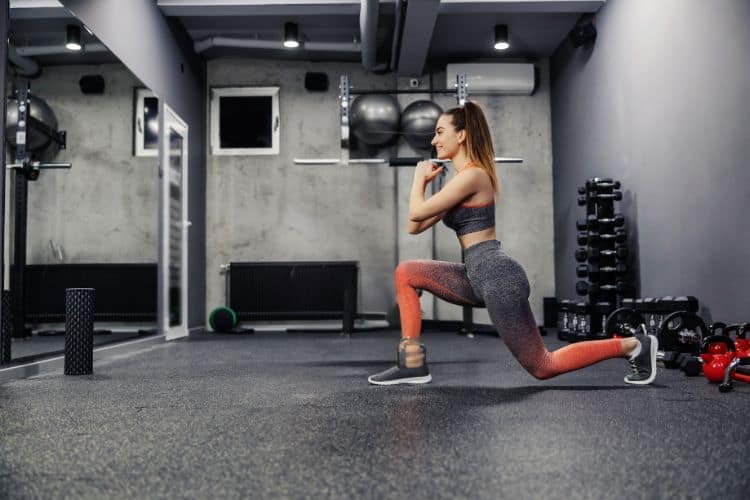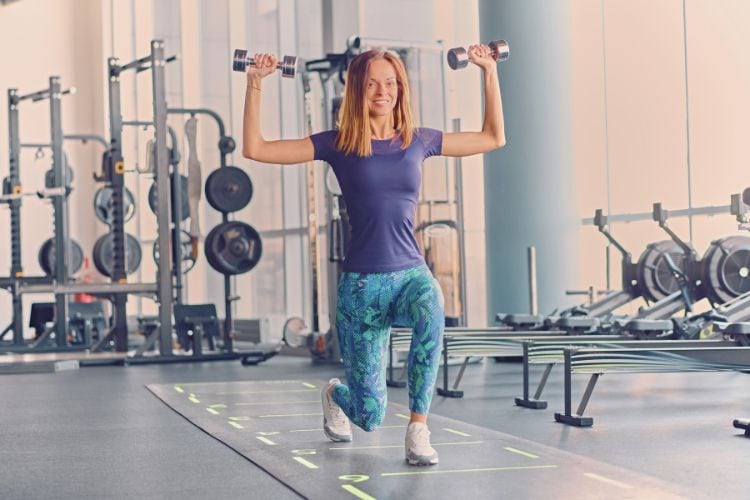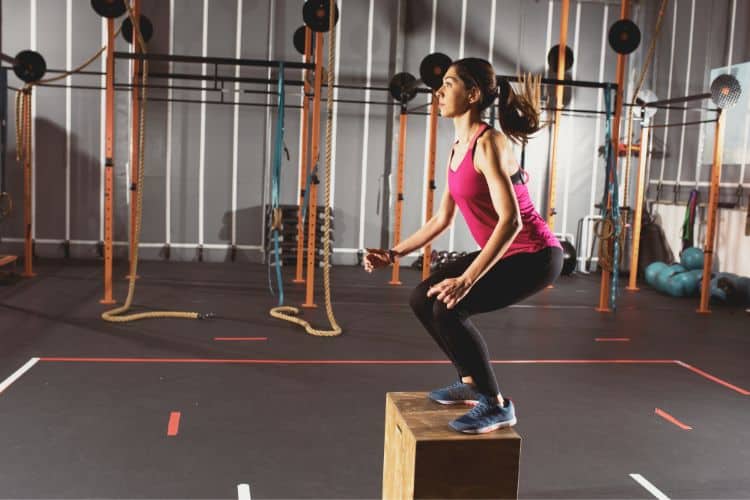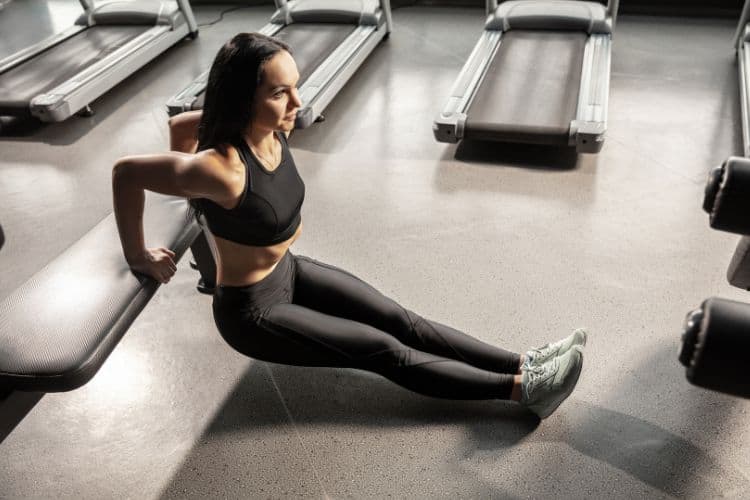Sign up for workout ideas, training advice, reviews of the latest gear and more.






Building muscle isn’t just about lifting heavy weights in the gym. For many women, the idea of strength training can be intimidating, especially if they’re new to fitness. Fortunately, bodyweight workouts offer an effective, accessible way to build muscle, all from the comfort of your home. This guide will delve into the benefits of bodyweight training, the science behind muscle building, and provide a detailed workout plan tailored specifically for women.
Bodyweight exercises are not only convenient but also incredibly effective for muscle building. The beauty of bodyweight workouts lies in their versatility and adaptability. Whether you’re a beginner or an advanced athlete, these exercises can be modified to suit your fitness level. Here are a few reasons why bodyweight workouts are a powerful tool for building muscle in women:
Bodyweight exercises typically involve multiple muscle groups, promoting functional strength that translates into everyday activities. This means you’re not just getting stronger in the gym; you’re improving your ability to perform tasks in daily life, from carrying groceries to playing with your kids.
Because bodyweight exercises often involve higher repetitions, they not only help build muscle but also improve muscle endurance. This is particularly important for women, as increased endurance helps in maintaining energy levels throughout the day and enhancing overall stamina.
One of the biggest advantages of bodyweight workouts is that they can be done anywhere, anytime. Whether you’re at home, in a park, or traveling, you don’t need any equipment to get a great workout in. This makes it easier to stay consistent with your fitness routine, which is crucial for muscle growth.
Before diving into specific exercises, it’s important to understand how muscle building works, particularly for women. The process of building muscle, known as hypertrophy, involves three key factors: mechanical tension, muscle damage, and metabolic stress.
Mechanical tension is created when you lift weights or perform bodyweight exercises that challenge your muscles. The more tension you create, the more muscle fibers are recruited, leading to growth. This is why progressive overload, or gradually increasing the difficulty of your workouts, is essential for muscle building.
When you exercise, especially when performing eccentric movements (lengthening of the muscle under tension), small tears occur in the muscle fibers. The body repairs these tears by fusing muscle fibers together, which increases the size of the muscle.
Metabolic stress is the “burn” you feel during an intense workout. It occurs when muscles are under tension for an extended period, leading to the accumulation of metabolites like lactate. This process triggers the release of anabolic hormones that contribute to muscle growth.
When it comes to designing a bodyweight workout for muscle building, it’s essential to include exercises that target all major muscle groups. This ensures balanced muscle development and reduces the risk of injury. Below is a comprehensive bodyweight workout plan that you can do three to four times per week.
A proper warm-up is crucial to prepare your muscles for the workout and prevent injury. Here’s a quick warm-up routine:
Muscles Targeted: Chest, shoulders, triceps, and core.
How to Perform: Start in a plank position with your hands shoulder-width apart. Lower your body until your chest nearly touches the floor, keeping your elbows close to your body. Push back up to the starting position.
Reps: 3 sets of 10-15 reps
Modification: If you’re a beginner, start with knee push-ups or incline push-ups.
Muscles Targeted: Triceps, shoulders, and chest.
How to Perform: Sit on the edge of a chair or bench with your hands next to your hips. Slide your hips off the edge, supporting your weight with your hands. Lower your body until your elbows are at a 90-degree angle, then push back up to the starting position.
Reps: 3 sets of 12-15 reps
Modification: If you need more of a challenge, extend your legs out in front of you.
Muscles Targeted: Core, shoulders, and triceps.
How to Perform: Start in a plank position with your feet shoulder-width apart. While maintaining a stable core, tap your left shoulder with your right hand, then your right shoulder with your left hand. Alternate sides without rotating your hips.
Reps: 3 sets of 20 taps (10 per side)
Modification: To make it easier, perform the exercise from your knees.
Muscles Targeted: Quadriceps, hamstrings, glutes, and core.
How to Perform: Stand with your feet shoulder-width apart. Lower your body as if sitting back into a chair, keeping your chest up and knees in line with your toes. Push through your heels to return to the starting position.
Reps: 3 sets of 15-20 reps
Modification: To increase difficulty, try jump squats or add a pulse at the bottom of the squat.
Muscles Targeted: Quadriceps, hamstrings, glutes, and calves.
How to Perform: Stand tall and take a step forward with your right leg. Lower your body until your right thigh is parallel to the floor and your left knee is just above the ground. Push through your right heel to return to the starting position. Alternate legs.
Reps: 3 sets of 12 reps per leg
Modification: For an added challenge, try reverse lunges or walking lunges.
Muscles Targeted: Glutes, hamstrings, and lower back.
How to Perform: Lie on your back with your knees bent and feet flat on the floor, hip-width apart. Lift your hips towards the ceiling, squeezing your glutes at the top. Lower back down with control.
Reps: 3 sets of 15-20 reps
Modification: Add a single-leg variation for increased difficulty.
Muscles Targeted: Core, shoulders, and glutes.
How to Perform: Start in a forearm plank position with your elbows directly under your shoulders and your body in a straight line from head to heels. Hold this position, keeping your core tight and hips level.
Duration: 3 sets of 30-60 seconds
Modification: If needed, perform the plank from your knees or reduce the duration.
Muscles Targeted: Obliques and core.
How to Perform: Sit on the floor with your knees bent and feet lifted off the ground. Lean back slightly and rotate your torso to the right, then to the left, while keeping your core engaged.
Reps: 3 sets of 20 twists (10 per side)
Modification: To make it more challenging, hold a weight or water bottle in your hands.
Muscles Targeted: Lower abs and hip flexors.
How to Perform: Lie on your back with your legs straight. Lift your legs towards the ceiling until your hips come off the floor, then slowly lower them back down without letting them touch the ground.
Reps: 3 sets of 12-15 reps
Modification: Bend your knees for an easier variation.
To continue building muscle, it’s essential to apply the principle of progressive overload. This means gradually increasing the difficulty of your workouts over time. Here are a few ways to incorporate progressive overload into your bodyweight workouts:
No workout routine is complete without proper nutrition. To build muscle, your body needs the right fuel. Here’s a breakdown of the key nutritional components for muscle building:
Protein is the building block of muscle. Aim to consume a source of protein with every meal to support muscle repair and growth. Good sources of protein include chicken, turkey, fish, eggs, Greek yogurt, and plant-based options like tofu and lentils.
Carbohydrates provide the energy needed to power through your workouts. Focus on complex carbs like whole grains, oats, sweet potatoes, and quinoa, which provide sustained energy.
Healthy fats are essential for hormone production, including hormones that support muscle growth. Include sources of healthy fats like avocados, nuts, seeds, and olive oil in your diet.
Staying hydrated is crucial for optimal muscle function and recovery. Aim to drink at least 8 glasses of water per day, and more if you’re sweating heavily during workouts.
While whole foods should be your primary source of nutrition, certain supplements can support muscle building. Consider incorporating protein powder, creatine, or branched-chain amino acids (BCAAs) into your routine if needed.
Muscle growth doesn’t happen during your workouts; it happens during rest and recovery. Giving your muscles time to repair and grow is just as important as the workouts themselves. Here’s how to optimize your recovery:
Aim for 7-9 hours of sleep per night. Quality sleep is essential for muscle recovery, hormone production, and overall health.
On your rest days, engage in low-intensity activities like walking, yoga, or stretching. This promotes blood flow to your muscles and aids in recovery without putting additional stress on your body.
As mentioned earlier, proper nutrition plays a crucial role in recovery. Consuming a post-workout meal or snack that includes protein and carbs can help kickstart the recovery process.
If you’re feeling overly fatigued or sore, it’s okay to take an extra rest day. Pushing through extreme soreness or fatigue can lead to injury and set back your progress.
Tracking your progress is key to staying motivated and ensuring you’re on the right path to building muscle. Here are some tips to help you stay on track:
Set specific, measurable goals for your muscle-building journey. Whether it’s increasing the number of push-ups you can do or reducing your body fat percentage, having clear goals will keep you focused.
Record your workouts, including the exercises, sets, reps, and any modifications you made. This will help you track your progress and see how far you’ve come.
Sometimes, the changes in your body might not be immediately visible on the scale. Taking progress photos every few weeks can help you see the physical changes that aren’t always reflected in the numbers.
Building muscle takes time, so celebrate the small victories along the way. Whether it’s completing an extra set or mastering a new exercise, recognizing your achievements will keep you motivated.
Bodyweight workouts are a powerful tool for building muscle, offering convenience, versatility, and effectiveness. By understanding the science behind muscle growth, following a well-rounded workout plan, and supporting your efforts with proper nutrition and recovery, you can achieve your muscle-building goals from the comfort of your home. Remember, consistency is key, and with dedication, you’ll start seeing the results you desire. So, lace up your sneakers, find a space in your home, and get ready to build the strong, toned physique you’ve always wanted.
Stay up to date on the latest women’s health, fitness and lifestyle trends and tips.